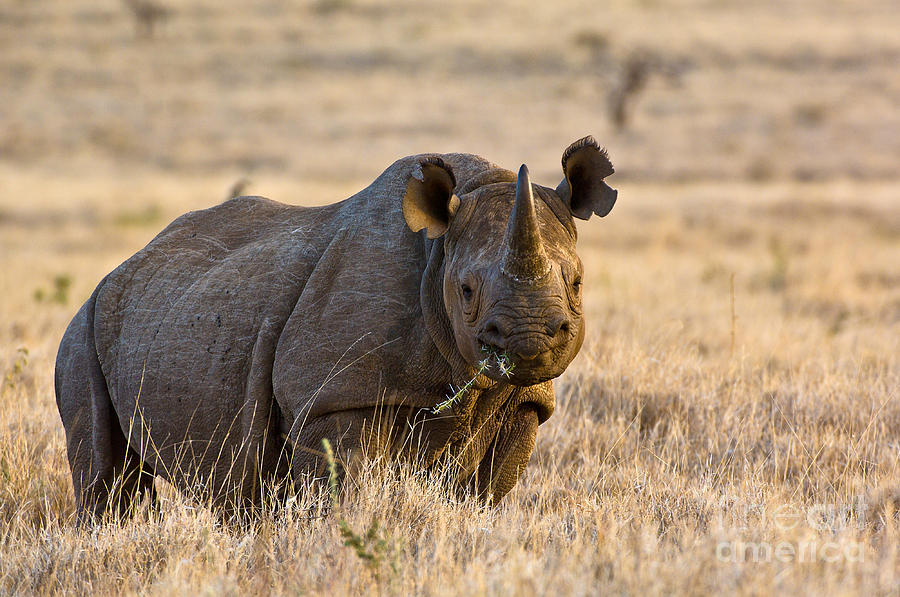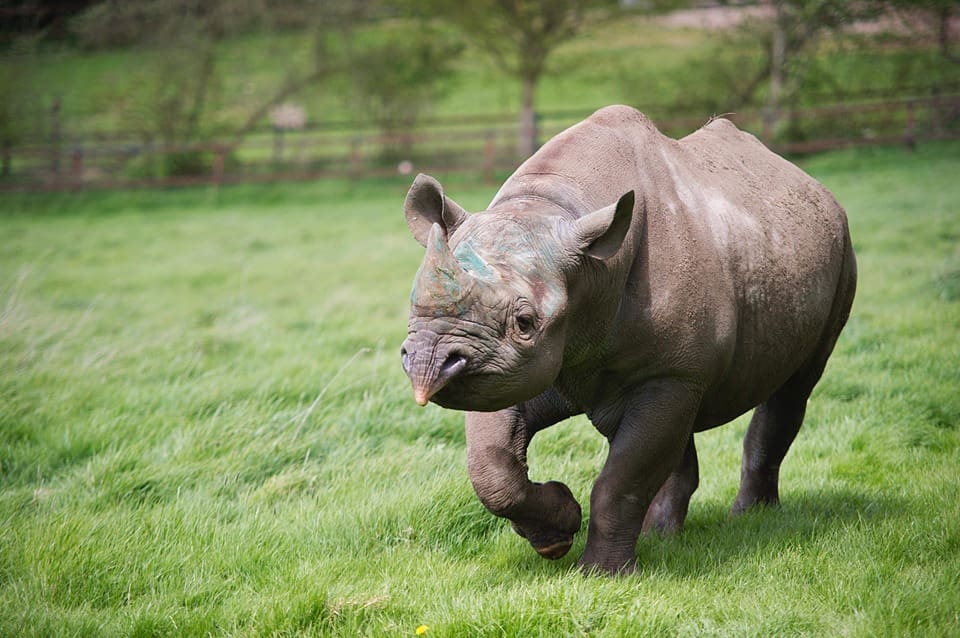


The name means "double-horned rhinoceros". The species was first named Rhinoceros bicornis by Carolus Linnaeus in the 10th edition of his Systema naturae in 1758. The species overall is classified as critically endangered, and one subspecies, the western black rhinoceros, was declared extinct by the IUCN in 2011. These species are now sometimes referred to as the square-lipped (for white) or hook-lipped (for black) rhinoceros. The word "white" in the name "white rhinoceros" is a misinterpretation of the Afrikaans word wyd, itself derived from the Dutch word wijd for wide, referring to its square upper lip, as opposed to the pointed or hooked lip of the black rhinoceros. The other African rhinoceros is the white rhinoceros (Ceratotherium simum).

Although the rhinoceros is referred to as black, its colors vary from brown to grey. The Black rhinoceros or hook-lipped rhinoceros ( Diceros bicornis), is a species of rhinoceros, native to eastern and central Africa including Kenya, Tanzania, Cameroon, South Africa, Namibia, Zimbabwe, and Angola. The black rhino is now found only in heavily guarded nature reserves, but illegal hunting still continues. For one horn, a poacher can earn twice what he would earn in a year as a farmer. It has been hunted almost to extinction for its horns, which are prized in China and the Middle East. The word comes from Latin rhinoceros which is from Ancient Greek rhinokeros. The black rhinoceros was once widespread south of the Sahara. Eastern and central Africa including Kenya, Tanzania, Cameroon, South Africa, Namibia, Zimbabwe, and Angola.


 0 kommentar(er)
0 kommentar(er)
